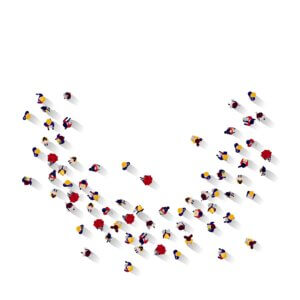|
|

My company recently hosted a live event for 250 people in Chicago. It’s been years in the planning and was originally supposed to be in May of 2020.
It exceeded my every expectation. We sold out the attendee tickets and sponsorship opportunities, and people are already signing up for next year’s offering. The energy at the conference was palpable. People were hungry to be together and connect. They wanted the proximity, but they wanted to do it safely.
You absolutely can do both. We learned a few truths regarding a post-pandemic event that are worth thinking about if there’s an event in your future, either as a host or attendee.
Safety is key: No real surprise there. Some people are still wary of travel and being in larger groups, while others are craving both. We required proof of vaccination or a negative COVID test within 72 hours of the event. Ninety-five percent of our attendees were fully vaccinated, and we used a secure third party to verify everyone’s information.
People’s concerns ranged from masks/no masks to indoor versus outdoor dining to how the seating was going to be handled. We did have a small handful of people opt out at the last minute, which we honored with grace.
You are not communicating enough: We thought we had communicated to the point of irritating our audience, but we were wrong. We still got lots of questions and requests for clarifications, and there was an overall hunger for detail. For many of our attendees, speakers and sponsors, this was the first time they’d flown or been at a work event since early 2020. They were very excited, but they were also very nervous. We did a lot more hand-holding than we’ve ever had to do before.
Attendees also wanted to know that other people were attending, so we did a “Countdown to Sold Out,” just to reassure them that they were making the same buying decision that many others were making. It also created some buzz about the scarcity of the tickets, which did help sell it out.
The typical event rules may not apply for a while: There are certain givens, like increasing the price for attendees as you get closer and closer to the event, that are tough to apply right now. Everyone is still living life day to day, and you don’t want to discourage them from deciding at the last minute to join you.
We also splurged on the amenities at the event, especially the food. We wanted everyone to feel well cared for and well nourished, so no continental breakfasts or skimpy snacks. We did a lot of variety and got many compliments that it was the best food anyone had seen at a conference, so it paid off.
Enjoy the extra energy and gratitude: Our attendees, sponsors and speakers were all so happy to be with their colleagues that their enthusiasm bubbled up over the entire event. Everything seemed heightened, like their reactions to the speakers. Even their attentiveness toward the sponsors felt over the top, and of course the sponsors loved it!
That energy also meant we ran a little long on most scheduled activities because it was hard to get them to break it up and move to the next thing. After we realized this trend on day one, we adjusted the schedule slightly for the second day to give everyone a little more connection time and breathing room.
I believe live events are going to come back with a vengeance in 2022. People are hungry for the connection and the normalcy of being together to learn and share. But the game has definitely changed a little. Prepare now and your next event may be your most successful yet.
This was originally published in the Des Moines Business Record, as one of Drew’s weekly columns.
